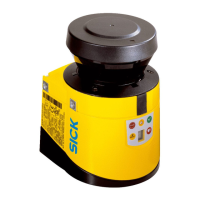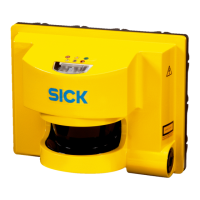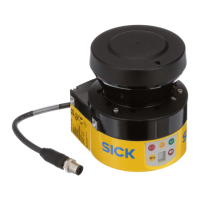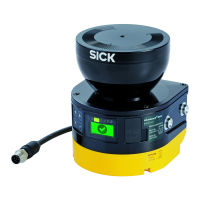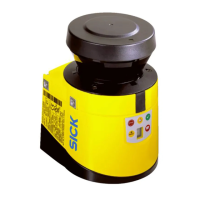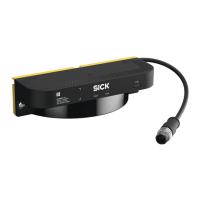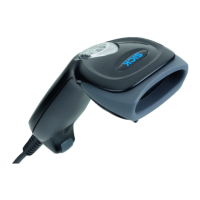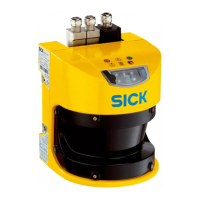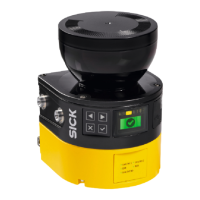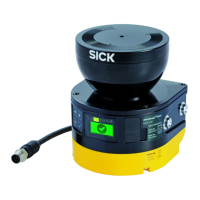Input delay
In t
he Input delay field, you can select a delay for the inputs.
If your control device, which you use to switch the static control inputs, cannot switch
to the appropriate input condition within 12ms (for example because of the switch’s
bounce times), you must configure an input delay. The selected input delay must be
large enough to allow your control device to switch to the new input condition within this
time.
Table 22: Empirical values for the required input delay
Switchover method Required input delay
Electronic switching via control, complementary electronic outputs
w
ith 0ms to 12ms bounce time
12ms
Tactile controls (relays) 30ms to 150ms
Control via independent sensors 130ms to 480ms
Use speed
If y
ou want to use the speed for monitoring case switching or as an additional condition,
activate this option.
Importing and exporting monitoring case tables
If y
ou need identical monitoring case tables across different projects, you can export
monitoring case tables out of one project and import them into another project.
Further topics
•
"Monit
oring case switching time", page 24
•
"Static control inputs", page 40
7.14.1.1 Configure switching sequence
Overview
Y
ou can specify the order in which the monitoring cases can be called.
You can specify one or two subsequent monitoring cases for each monitoring event.
If you do not specify a subsequent monitoring case for a monitoring case, then any
monitoring case may follow.
If input conditions are present that do not call up any of the defined subsequent
monitoring cases, the safety laser scanner switches all safety outputs to the OFF state.
You can specify the order of the monitoring cases as a process or in individual steps.
Process
Y
ou define one or more sequences. You can use a sequence to map the sequence of
work steps for your machine.
In all sequences, you can define a maximum of two subsequent monitoring cases for
each monitoring case.
If you do not specify a subsequent monitoring case for a monitoring case, then any
monitoring case may follow.
Individual steps
Y
ou define individually for each monitoring case which one or two monitoring cases may
follow.
If you do not specify a subsequent monitoring case for a monitoring case, then any
monitoring case may follow.
7 C
ONFIGURATION
82
O P E R A T I N G I N S T R U C T I O N S | nanoScan3 – EtherNet/IP™ 8027909/2023-02-22 | SICK
Subject to change without notice
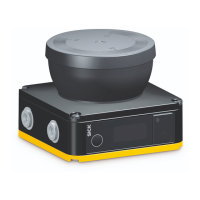
